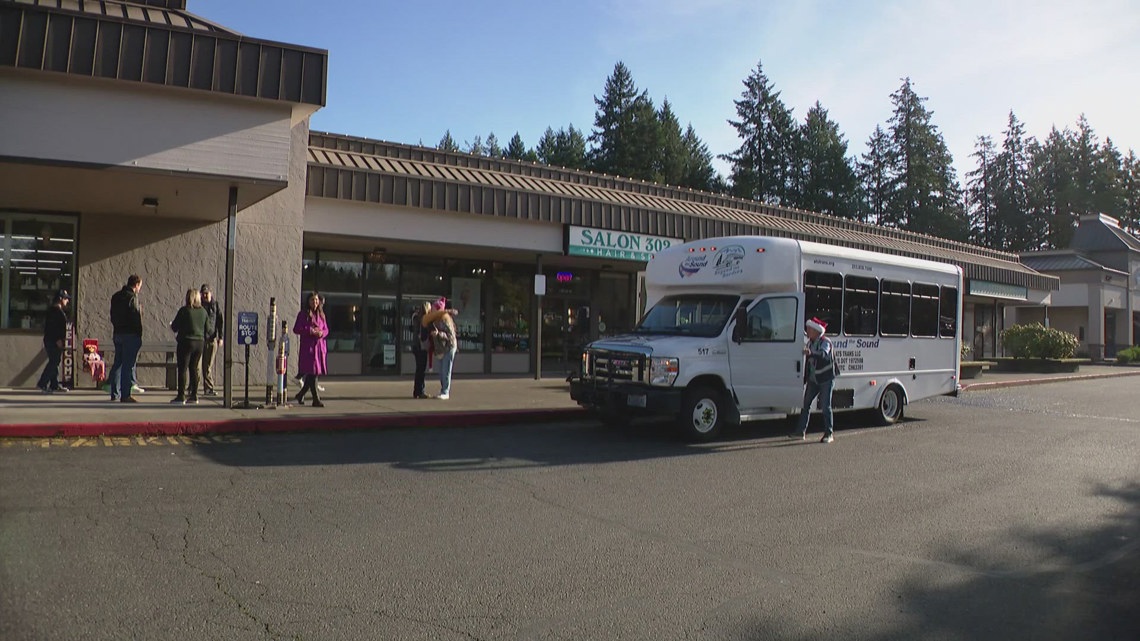7 Nebraska communities awarded Community Development Block Grant funds for critical infrastructure – Nebraska Public Media

Infrastructure Investment in Rural Communities Aligns with Sustainable Development Goals
Overview of Public Works Program Funding
A grant fund totaling $4.5 million has been allocated to seven rural communities for the enhancement of critical infrastructure. This investment directly supports the development of resilient and sustainable community services, a core tenet of the Sustainable Development Goals (SDGs). The funding targets projects essential for public health and safety, aligning with several key SDGs.
- SDG 9 (Industry, Innovation and Infrastructure): The program focuses on upgrading foundational infrastructure, including sewer main replacements and water system improvements.
- SDG 11 (Sustainable Cities and Communities): By funding the construction and renovation of fire halls, the grant enhances community safety and resilience.
Case Study: Water System Modernization in Walthill
The village of Walthill serves as a specific example of the grant’s impact, receiving $600,000 to address its aging water infrastructure. The pre-existing system was characterized by outdated water lines and failing valves, leading to operational failures and water leaks. This situation presented a direct challenge to providing safe and reliable water for its residents.
The allocated funds, guided by an initial engineering and planning evaluation conducted under the U.S. Department of Agriculture’s SEARCH program, will be used for targeted upgrades. The project’s outcomes are directly linked to critical Sustainable Development Goals:
- Higher Water Quality and Reliability: The replacement of failing water valves and lines will ensure a stable and safe water supply, directly contributing to SDG 6 (Clean Water and Sanitation), which aims to ensure availability and sustainable management of water and sanitation for all.
- Improved Public Health: By modernizing the water system, the project mitigates health risks associated with contaminated or unreliable water, supporting SDG 3 (Good Health and Well-being).
- Increased System Resilience: These infrastructure improvements build a more robust and dependable public utility, aligning with the goals of SDG 9 to develop quality, reliable, sustainable, and resilient infrastructure.
Strategic Objectives and Community Sustainability
According to the Department of Economic Development, the overarching goal of this funding is to bolster the long-term viability of rural areas. The initiative is designed to improve the quality of life to retain young people and attract new residents, fostering sustainable community growth.
The program’s stated objectives demonstrate a strong commitment to the principles of sustainable development:
- Enhance local vitality and quality of life.
- Improve public health and safety.
- Promote local economic well-being.
These objectives are in direct alignment with SDG 11 (Sustainable Cities and Communities), which seeks to make human settlements inclusive, safe, resilient, and sustainable. By investing in foundational infrastructure, the grant program provides the necessary framework for communities to thrive, ensuring they remain viable and attractive places to live and work for future generations.
Analysis of Sustainable Development Goals in the Article
1. Which SDGs are addressed or connected to the issues highlighted in the article?
-
SDG 6: Clean Water and Sanitation
This goal is directly addressed through the article’s focus on updating water systems. The text explicitly mentions projects for “sewer main replacements” and “water system improvements” in rural communities like Walthill, which suffers from “outdated water infrastructure.”
-
SDG 9: Industry, Innovation and Infrastructure
The article centers on the allocation of “$4.5 million of the grant funds” to improve “critical infrastructure.” This aligns with SDG 9’s aim to build resilient infrastructure. The projects funded, including water systems and “construction projects for new and existing fire halls,” are fundamental infrastructure developments for community well-being and economic support.
-
SDG 11: Sustainable Cities and Communities
The overarching goal of the funding is to improve life in rural areas, making them more sustainable and attractive. The article states the funds aim to “enhance local vitality, public health and safety, economic well-being, and quality of life.” Furthermore, a stated objective is to “retain young people and attract new residents,” which is central to ensuring communities are inclusive, safe, resilient, and sustainable.
2. What specific targets under those SDGs can be identified based on the article’s content?
-
Target 6.1: Achieve universal and equitable access to safe and affordable drinking water for all.
The project in Walthill aims to fix “outdated water lines and valves” that were failing, causing “water leaks.” The expected outcome is “higher water quality” and “higher reliability of the system,” which directly contributes to providing safe and reliable drinking water for the community’s residents.
-
Target 9.1: Develop quality, reliable, sustainable and resilient infrastructure…to support economic development and human well-being.
The entire initiative described in the article is an effort to meet this target. The grant funds are used for “sewer main replacements, water system improvements and construction projects for new and existing fire halls.” These actions are explicitly intended to improve infrastructure to support “public health and safety” and “economic well-being.”
-
Target 11.1: Ensure access for all to adequate, safe and affordable housing and basic services.
The improvements to water and sewer systems represent an upgrade to essential basic services for the residents of the seven communities. The article highlights that the existing infrastructure “just isn’t functioning,” and the grant is a direct intervention to ensure access to these fundamental services.
3. Are there any indicators mentioned or implied in the article that can be used to measure progress towards the identified targets?
-
Financial Investment in Infrastructure: The article explicitly states the amount of funding allocated, which is a key indicator of progress.
- “$4.5 million of the grant funds was allocated to seven communities.”
- Walthill received a “$600,000 grant.”
-
Improved Water System Performance: The article implies that progress can be measured by the operational improvements in the water system.
- An expected outcome is “higher reliability of the system,” suggesting that a reduction in the frequency of “valve failures and water leaks” would be a key performance indicator.
- The stated benefit of “higher water quality” can be measured through regular water testing post-upgrades.
-
Completion of Infrastructure Projects: The physical completion of the planned projects serves as a direct indicator of progress.
- The article mentions specific projects like “water valve replacements and waterline replacements,” whose completion can be tracked.
-
Community Vitality and Demographics: An implied long-term indicator is the impact on the community’s population and quality of life.
- The goal to “retain young people and attract new residents” suggests that population trends and demographic data for these rural areas could be used to measure the success of the initiative in improving the “quality of life.”
4. Table of SDGs, Targets, and Indicators
| SDGs | Targets | Indicators |
|---|---|---|
| SDG 6: Clean Water and Sanitation | 6.1: Achieve universal and equitable access to safe and affordable drinking water for all. |
|
| SDG 9: Industry, Innovation and Infrastructure | 9.1: Develop quality, reliable, sustainable and resilient infrastructure to support economic development and human well-being. |
|
| SDG 11: Sustainable Cities and Communities | 11.1: Ensure access for all to adequate, safe and affordable housing and basic services. |
|
Source: nebraskapublicmedia.org
What is Your Reaction?
 Like
0
Like
0
 Dislike
0
Dislike
0
 Love
0
Love
0
 Funny
0
Funny
0
 Angry
0
Angry
0
 Sad
0
Sad
0
 Wow
0
Wow
0




















































.jpg.webp?itok=0ZsAnae9#)



























